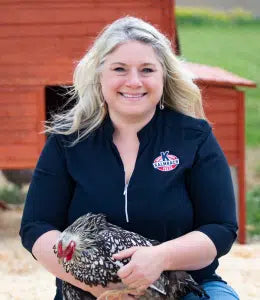How to Determine Female vs. Male Chicks

Most backyard chicken keepers are interested in establishing layer flocks. For that reason, female chicks are in much higher demand than male chicks. Determining the sex of chicks can often be difficult. Because the sex organs of chickens are located inside their body, it is often not obvious if you have a female or a male chick. However, there are some breed-specific traits that can help determine the sex of your chicks. Today we are going to discuss some of the most common ways to determine if you have female or male chicks.
Buying Chicks that Are Sorted by Sex
The easiest way to determine the sex of your chicks is to buy pre-sorted babies. Most hatcheries have trained professionals that can examine the sex organs of chicks and determine if they are female or male. This process is called vent sexing and requires a lot of training and practice. Vent sexing is not something that the average poultry keeper should attempt to learn on their own. The process requires a trained eye, a very delicate touch, and LOTS of practice. Errors in the process of exposing the sex organs can cause permanent damage or death to baby chicks. For this reason, it is often best for poultry keepers to leave this practice to the professionals and purchase chicks that are already sorted by sex. When perusing your local feed store or flipping through the latest poultry catalogue, pay attention to the signs on the chick tanks or the information listed in the catalogues. If you are interested in female chicks, look for labels that specifically say “Females” or “Pullets.” The terms “Straight Run” or “Mixed Sex” mean that the chicks in that tank are a combination of both females and males so you will want to avoid these groups if you desire only future laying hens. You should also be aware that, while professional chick sorters are very good at their job, they are not perfect. The accuracy rate of pre-sorted chicks is usually around 90%. That means there is a chance that you may end up with a male. Make sure you are okay with that possibility. If you live in a municipality or community that forbids roosters, consider some of our other tricks from this article when selecting the right type of chicks for your flock!
What is Sex Linking in Chickens?
There are certain breeds of chickens where the female and male chicks are different colors when they hatch. This is called sex-linking and is a SUPER EASY way to determine if you have female or male chicks. Sex linking is a genetic trait and results when cross-breeding certain types of chickens. Red Sex Link and Black Sex Link chicks are the most common types of sex-linked chickens. In Red Sex Links, for example, the female chicks are red and the male chicks are yellow at hatch. In Black Sex Links, the female chicks are all black at hatch and the male chicks will have white spots on their head at hatch. If having all females is extremely important to you (municipality rules, you already have too many roosters, etc.), then choosing Sex Link strains of chickens may be your best option. Please note that the sex-linking trait in these birds is not passed down to future generations. Therefore, if you breed Red Sex Links or Black Sex Links, you will not be able to sort their offspring using this trait.
Can I Feather Sex my Chicks?
In some breeds of chickens, you can determine female and male chicks by feathering sexing. Feather sexing is quite limited and most breeds cannot be sorted just by examining the feathers. Surprisingly, a large portion of our broiler chickens can be sorted using the feather-sexing technique. This technique requires that you hold the chick upright, fully extend one wing, and look for two layers of feathers on the wing (top = covert feathers; bottom = primary feathers). If the top feathers are shorter than the bottom feathers, your chick is a female! If the top feathers are the same length or longer than the bottom feathers, your chick is a male! Feather sexing will only work if you select chicks that are the offspring of certain breeds that are cross-bred to produce a hybrid chick. If you are interested in using feather sexing as a method to sort your chicks, make sure you are aware of the age limitations, breed limitations, and the required genetic hybrids before you begin.
